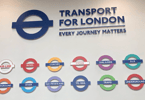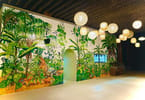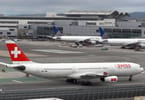At least 13 people have been killed and 75 injured in anti-government demonstrations in the Egyptian city of Suez over the past four days.
Suez (el-Suweis) is located on the Southern tip of the Suez Canal, and has been a commercial port since the 7th century. The spice trade and pilgrimages to Mecca made it prosperous throughout the Middle Ages. It became a naval base in the 15th century and, in 1869, the opening of the Suez Canal ensured its development as a modern city. Today, Suez is one of Egypt’s largest ports. It is situated near the scenic Ataga Hills (Jebel Ataga), about 134 kilometers (83 miles) from Cairo and 88 kilometers (55 miles) from Ismailia, this city affords an excellent view of Sinai and the Red Sea. It is also interesting to watch ships passing through the Canal form Suez’s vantage point.
On Friday, thousands of Egyptian protesters stormed the main police station in the port city of Suez, overwhelming security forces and raising an even bigger challenge to the embattled regime of President Hosni Mubarak.
The protesters freed prisoners from the city jail, destroyed armored police vehicles, then sacked the building and looted its contents.
The demonstrators emerged from Friday prayers at mosques in Suez and confronted police outside the station. Police fired at the demonstrators, who then surged forward to take over the police station. The protesters dragged fleeing riot police off their motorbikes and seized their batons and equipment, AFP reported.
They also set at least a half dozen armored vehicles on fire.
After storming the police station, protesters removed its contents — refrigerators, desks, files, and other equipment
Friday evening was the first time the army was deployed on the streets. It was not immediately clear what role it would play or how troops would react to the protesters.
Some demonstrators held banners saying: “Everyone against one” and chanted “Peaceful, peaceful, peaceful, no violence.” Others threw shoes at and stamped on posters of Mubarak.
As clashes intensified, police waded into the crowds with batons and fired volleys of tear gas.
On Thursday, the Egyptian government vowed to crack down on demonstrations and arrest participants and went so far as to block the internet, mobile phones, and SMS services on Thursday night in order to disrupt the planned demonstrations.
Before Egypt shut down internet access, activists were posting and exchanging messages using social networking services such as Facebook and Twitter, listing more than 30 mosques and churches where protesters were to organize on Friday.
WHAT TO TAKE AWAY FROM THIS ARTICLE:
- On Thursday, the Egyptian government vowed to crack down on demonstrations and arrest participants and went so far as to block the internet, mobile phones, and SMS services on Thursday night in order to disrupt the planned demonstrations.
- On Friday, thousands of Egyptian protesters stormed the main police station in the port city of Suez, overwhelming security forces and raising an even bigger challenge to the embattled regime of President Hosni Mubarak.
- It became a naval base in the 15th century and, in 1869, the opening of the Suez Canal ensured its development as a modern city.






















